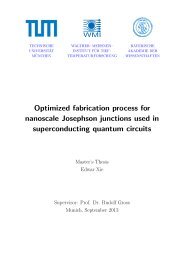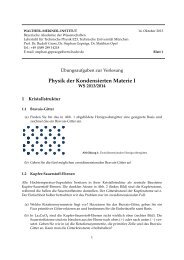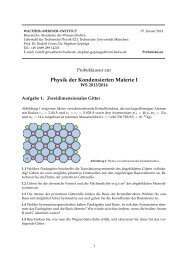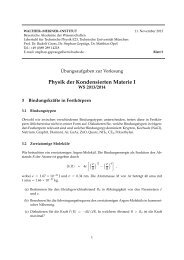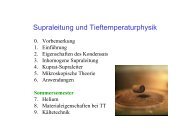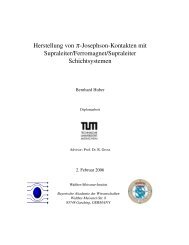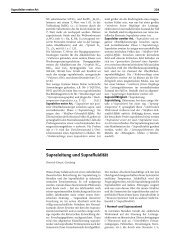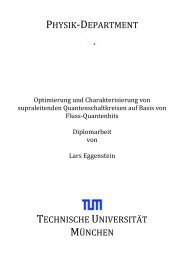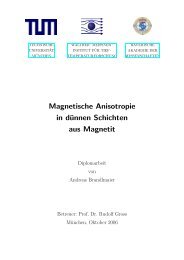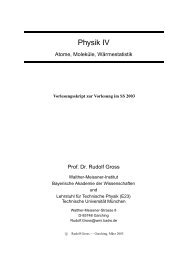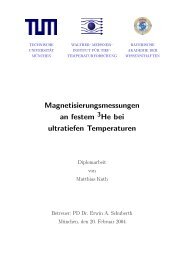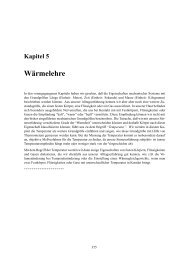Surface magneto-plasmons in magnetic multilayers - Walther ...
Surface magneto-plasmons in magnetic multilayers - Walther ...
Surface magneto-plasmons in magnetic multilayers - Walther ...
Create successful ePaper yourself
Turn your PDF publications into a flip-book with our unique Google optimized e-Paper software.
Chapter 1<br />
Introduction<br />
Plasmons i.e., longitud<strong>in</strong>al density fluctuations of quasi-free electrons <strong>in</strong> a metal, are<br />
studied s<strong>in</strong>ce the early 20th century and can be directly derived from Maxwell’s equa-<br />
tions [1, 2]. The first who theoretically <strong>in</strong>vestigated <strong>plasmons</strong> <strong>in</strong> th<strong>in</strong> metal films was<br />
Ritchie [3], who started the field of surface <strong>plasmons</strong> with his pioneer<strong>in</strong>g work <strong>in</strong> 1957.<br />
In the follow<strong>in</strong>g years his work was verified by electron-loss spectroscopy experiments<br />
and was theoretically extended [4, 5, 6, 7].<br />
In 1968 Kretschmann and Raether <strong>in</strong>troduced their method to excite surface plas-<br />
mons by light, simply by br<strong>in</strong>g<strong>in</strong>g a metal film <strong>in</strong> contact with a (glass) prism and<br />
coupl<strong>in</strong>g the light <strong>in</strong>to the prism [8], allow<strong>in</strong>g to record angle resolved surface plasmon<br />
resonances [9]. Prior to the prism coupl<strong>in</strong>g method, it was thought no to be possible<br />
to excite surface <strong>plasmons</strong> by light, as the dispersion relation of surface <strong>plasmons</strong> and<br />
the dispersion relation of light do not <strong>in</strong>tersect. But by coupl<strong>in</strong>g light <strong>in</strong>to a prism<br />
its momentum changes from ω/c to (ω/c) √ ε (0) (ε (0) is the dielectric constant of<br />
the prism) and thus both dispersion relations, the one of light and the one of surface<br />
<strong>plasmons</strong>, do cross. In another picture the excitation of surface <strong>plasmons</strong> is expla<strong>in</strong>ed<br />
by an evanescent wave, which occurs when the light is totally reflected at the prism-<br />
metal <strong>in</strong>terface. The evanescent wave has a phase velocity of v = c/( √ ε (0) s<strong>in</strong> θ0) (θ0<br />
is the <strong>in</strong>cident angle of the light with respect to the normal of the sample surface),<br />
which fulfils the resonance condition of surface <strong>plasmons</strong> for θ0 = θSPP, the surface<br />
plasmon resonance angle.<br />
Today, the excitation of surface <strong>plasmons</strong> with light is a well established technique<br />
and found its way <strong>in</strong>to many applications, <strong>in</strong>clud<strong>in</strong>g biosensors [10, 11] or microscopy<br />
[12]. Furthermore, with the possibility to pattern and characterise metals on the<br />
nanometre scale a new field developed: plasmonics. In this field <strong>plasmons</strong> are coupled<br />
1



